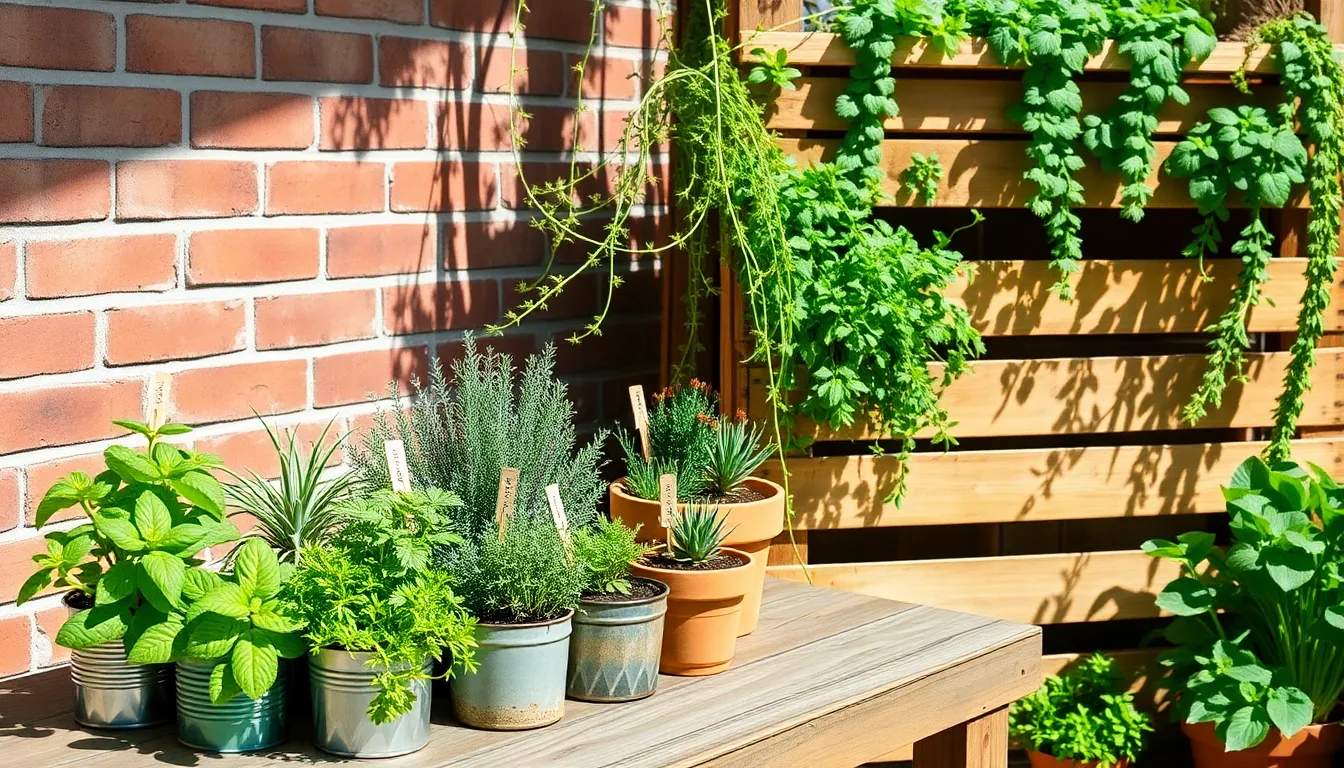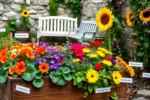Welcome to the vibrant world of herb gardening, where even the simplest patch of soil can transform into a lush, aromatic paradise. Whether you’re planting your very first seed or have a garden brimming with experience, this guide is your ticket to cultivating a thriving herb haven without breaking the bank.
In these pages, you’ll discover a treasure trove of affordable tips that blend creativity with practicality, ensuring your gardening journey is as joyful as it is rewarding. From maximizing small spaces to ingenious cost-saving techniques, we promise you’ll feel empowered to turn your green-thumb dreams into reality.
Imagine the satisfaction of snipping fresh basil for your pasta or mint for your morning tea, all grown with your own hands. With our guidance, you’ll not only enhance your garden’s beauty and productivity but also experience the sheer delight of nurturing life from the soil up.
Start with Seed Packets

Purchasing seed packets is an affordable way to start your herb garden, offering a wide variety of choices. They allow you to grow herbs from scratch, which can be highly rewarding and cost-effective compared to buying young plants.
When selecting seeds, consider the herbs you use most often in cooking, such as basil, parsley, or cilantro. Starting with these common herbs ensures that you’ll have fresh ingredients readily available and encourages frequent harvesting, which promotes new growth.
Follow the instructions on the seed packet for optimal planting depth and spacing. Most herbs prefer well-draining soil; you can achieve this by mixing garden soil with sand or perlite to prevent waterlogging.
For beginners, sowing seeds indoors before the last frost date can extend the growing season. Use small pots or seed trays placed in a sunny windowsill, where they can receive plenty of light and warmth necessary for germination.
Advanced gardeners might consider succession planting by sowing seeds every few weeks. This technique ensures a continuous harvest throughout the growing season, keeping your herb garden productive and lush.
Utilize Recycled Containers
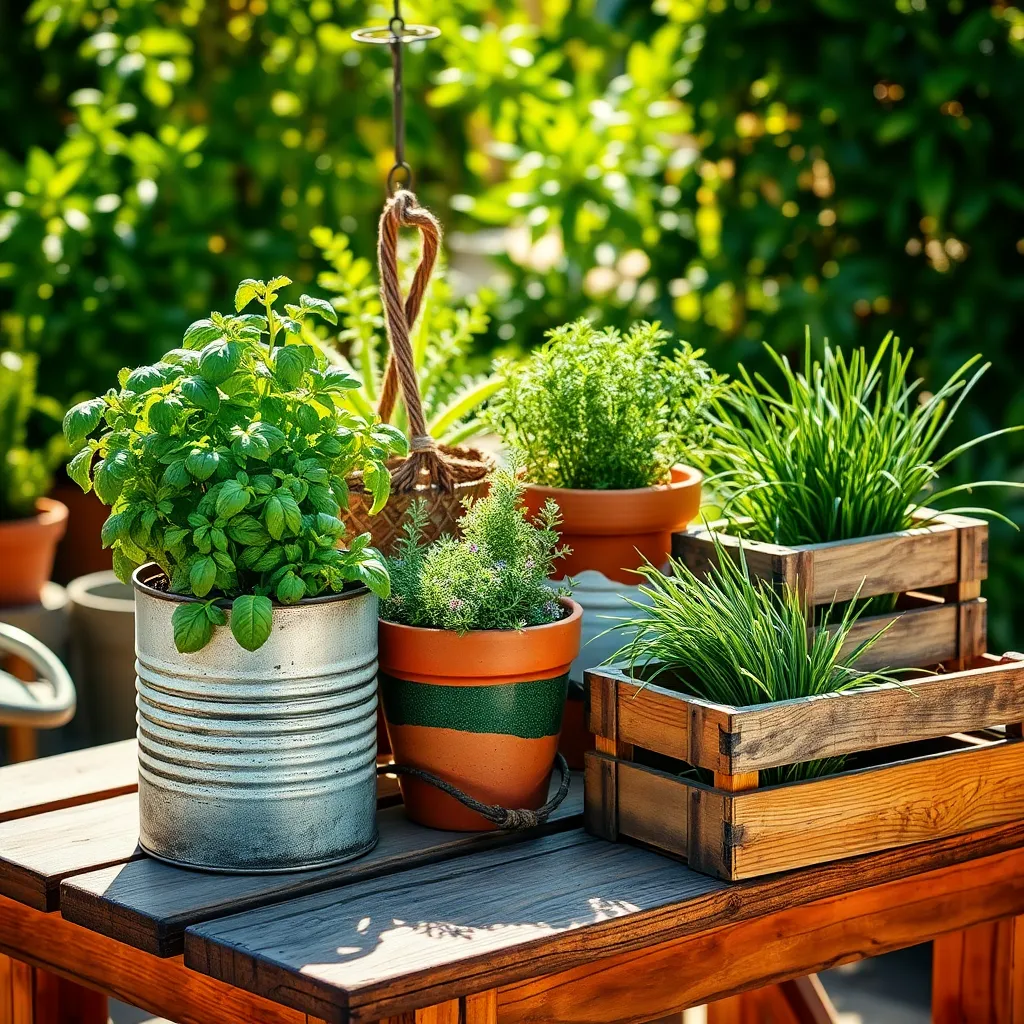
Recycling containers is an excellent way to start your herb garden without spending a fortune. Look around your home for items like yogurt cups, tin cans, or even old teapots that can be repurposed into charming planters.
Before using these containers, make sure to clean them thoroughly to remove any residues that might harm your plants. Drill small drainage holes at the bottom to ensure excess water can escape, preventing root rot.
Consider the size of the container relative to the herb you wish to grow. For example, basil and mint need more room for their roots, so choose larger containers for these herbs, while chives and parsley can thrive in smaller spaces.
When planting, use a high-quality potting mix enriched with organic matter, as this provides necessary nutrients and promotes healthy growth. Water your herbs consistently, but allow the soil to dry slightly between waterings to avoid overwatering.
Place your containers in a spot that receives at least six hours of sunlight daily, as most herbs thrive in bright conditions. Rotate the containers regularly to ensure even growth and prevent the plants from leaning towards the light source.
Create a DIY Herb Tower
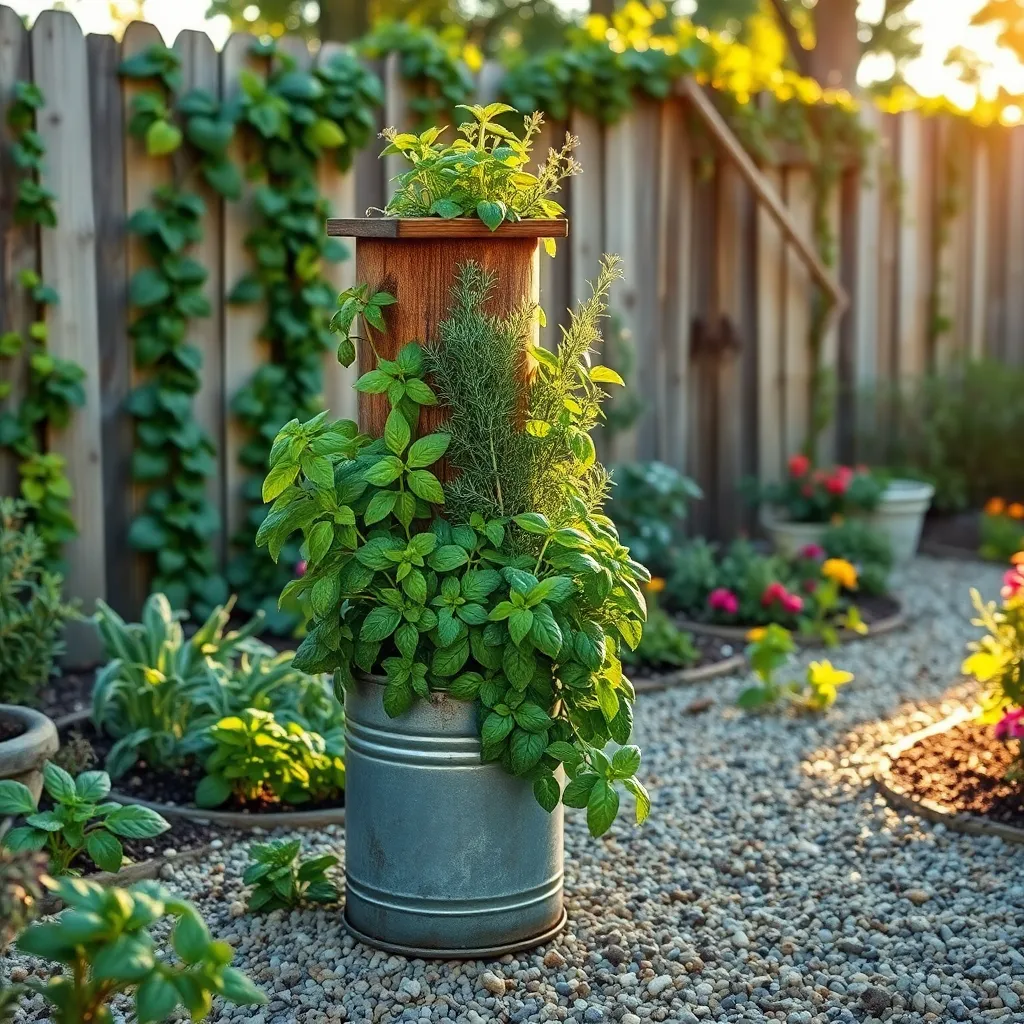
Creating a DIY herb tower is an excellent way to maximize your growing space while keeping your herbs easily accessible. Start with a set of stackable pots or containers, which can be easily sourced from garden centers or repurposed from household items.
Choose a variety of herbs that thrive in similar conditions to ensure cohesive growth. Herbs like basil, parsley, and thyme are excellent choices, as they all prefer full sun and well-drained soil.
Begin by filling each container with a quality potting mix that includes good drainage properties. Consider adding a slow-release fertilizer to the soil to provide sustained nutrition to your herbs throughout the growing season.
When planting, ensure that each herb has enough space to grow by placing them at least a few inches apart. This spacing will allow for adequate air circulation and reduce the risk of fungal diseases.
Water your herb tower consistently but avoid overwatering, which can lead to root rot. A general rule is to water when the top inch of the soil feels dry to the touch.
- Position your herb tower in a location that receives at least six hours of sunlight daily.
- Rotate the tower occasionally to ensure even sunlight exposure for all plants.
- Prune your herbs regularly to encourage bushy growth and prevent them from becoming leggy.
For those looking to take their herb growing to the next level, experiment with companion planting by adding flowers like marigolds to your tower to repel pests. This practice not only benefits the herbs but also adds a splash of color to your garden.
Use Homemade Compost Boosts
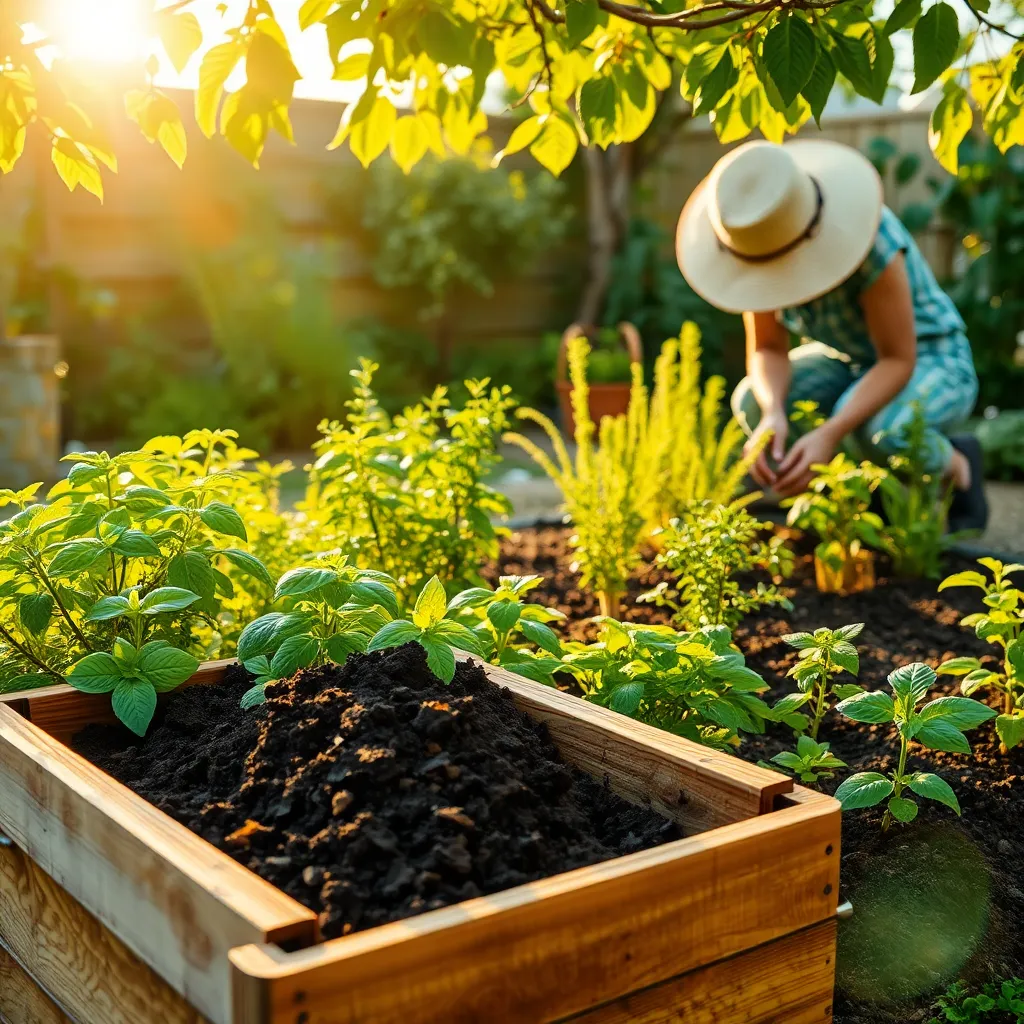
Using homemade compost can significantly enhance the growth and health of your herbs. Compost enriches the soil with essential nutrients, improving soil structure and promoting healthy root systems.
Begin by collecting kitchen scraps like fruit peels, coffee grounds, and eggshells. Avoid adding meat, dairy, or oils to your compost pile, as these can attract pests and slow down the decomposition process.
Turn your compost regularly to speed up decomposition and ensure even breakdown of materials. This practice aerates the pile, promoting the activity of beneficial microbes that contribute to the composting process.
For optimal results, aim to keep your compost moist but not soggy, similar to a damp sponge. Water it lightly during dry spells and cover it if heavy rain is expected to prevent it from becoming too wet.
Once your compost is ready, mix it into your herb garden’s soil before planting or use it as a top dressing for existing plants. This not only boosts nutrient availability but also helps retain moisture, reducing the need for frequent watering.
Advanced gardeners might experiment with adding specific ingredients to tailor compost for particular herbs. For instance, adding more calcium-rich materials like eggshells can benefit herbs such as basil and rosemary that thrive in slightly alkaline soil.
Practice Companion Planting Techniques

Companion planting is a time-tested technique that can enhance your herb garden’s productivity and health. By strategically placing plants together, you can deter pests, improve growth, and optimize space usage in your garden.
Begin by pairing herbs with similar growing needs to maximize their thriving potential. For instance, plant basil and tomatoes together; basil can repel harmful insects that might otherwise target your tomatoes.
Consider using marigolds as a companion plant in your herb garden. These flowers can effectively repel nematodes and other pests, creating a more balanced and healthy environment for your herbs.
Advanced gardeners might experiment with the “Three Sisters” method, which involves planting corn, beans, and squash together. Although not herbs, this concept can inspire similar beneficial combinations, such as pairing dill with cabbage to attract beneficial wasps.
Conclusion: Growing Success with These Plants
In exploring the nurturing parallels between herb gardening and cultivating thriving relationships, we’ve uncovered five key concepts: communication, patience, understanding, adaptability, and shared growth. Just as herbs flourish with the right care, relationships bloom when nurtured with open dialogue and empathy. Patience is essential as both plants and relationships grow at their own pace, requiring understanding and adaptability to navigate changes together. Lastly, shared growth ensures that both partners thrive, much like a well-tended garden.
As an actionable next step, choose one herb to plant together with your partner, using this shared activity to foster communication and patience as you care for it. Embrace the growth process as a metaphor for your relationship’s journey.
Remember to save or bookmark this article, so you can revisit these insights and continue nurturing your relationship garden. As you move forward, envision a future where your relationship is not only resilient but flourishing, rooted in mutual support and love. By embracing these gardening principles, you’re taking a proactive step towards strengthening your bond, ensuring that your relationship blooms beautifully over time.

